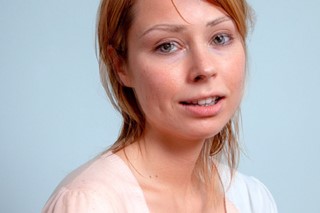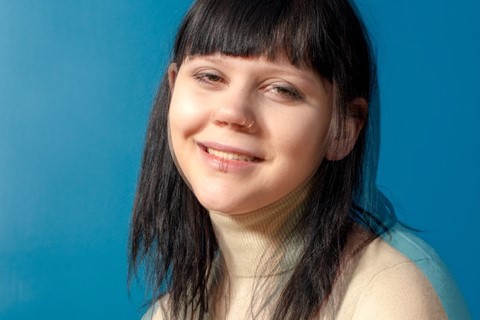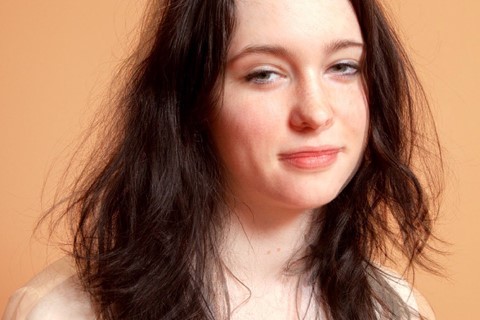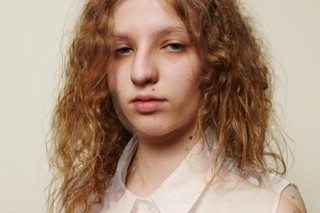Richard Kern is no stranger to controversy. The New York photographer’s four-decade career has been characterised by its fearlessness and extremity; from his graphic nudes of subcultural scene kids (New York Girls, 1997) to his hardcore, hyper-violent filmmaking in the 1980s ‘Cinema of Transgression’ movement. His new series, Doubles, published in the latest instalment of Baron, treads a similar path, showing portraits of young women superimposed with two separate images: one in which they’re topless, the other fully clothed. According to Kern, these hallucinatory photos are an exploration of the last stage of innocence, the phase where a girl is “leaving childhood and is slowly but surely entering adulthood”.
Although tamer and more subtle than his earlier work, the themes are just as provocative: these are nude young women, captured under the gaze of an older man. But Kern insists that this was a collaborative process. His subjects all approached and contacted him first, and posed without any direction, in whatever way they felt comfortable in front of the camera. And despite the nudity, the end result isn’t about shock and erotic titillation – instead, it’s a study of the perils of young adulthood, and the awkwardness, vulnerability and joy that comes from growing into your body, role and sexual power. In a conversation with one of the series’ subjects, “Alex”, Kern talks more about the project, and the career he’s had so far.
Alex: Let’s ease into this. When you’re shooting at home, in New York, do you have a pre-game ritual? Are you superstitious?
Richard Kern: I clean the whole house from top to bottom the day before or the morning of the shoot. It would be hard to ask a subject to get in a bathtub for a shot, if it’s filthy. Sometimes I make a quick list of things I’d like to shoot and then try to figure out if there’s any place in the apartment that I’ve not used before.
A: You’re a big movie-head. I know films like Gates of Hell, The Sadist and Russ Meyer films influenced your early work. Do you still draw inspiration from cinema?
RK: Gates of Hell, The Sadist and Russ Meyer films were all direct influences for the movie Fingered. I admired Russ Meyer, because he did everything himself (photography, editing, sound, producing and distribution) and because although they seemed to be sex films, all the men in them were stupid and obnoxious. They seem dated now, but you have to remember I was watching them in the 1970s and 80s.
At the opposite end of the spectrum, I loved Blowup because it has so many layers. My parents wouldn’t let me see it when it came out, so I was dying to see it from that moment on. To say you like this film now is frowned upon, because of the way the photographer treats women, but the guy was supposed to be a self-centred asshole. In most of Antonioni’s films, there’s a character or two searching for a way to make their life interesting or trying to understand the confusion or chaos in their life. I like films with this theme. Hong Sang-soo is a Korean director I like, who makes films like this but with some humour.
“[People think] I have sex with all the models and live some wild crazy life. Right now, I just finished mopping up the cat hair in my apartment” – Richard Kern
A: Some of my favourite works of yours are collaborations with women, especially the Cinema of Transgression films you shot with Lung Legs and Lydia Lunch, as well as the Vice-era shoots with Petra Collins. Can you tell me about the process of collaborating with other artists and how it informs your work?
RK: Everything I do is a collaboration, that begins with me asking the person I’m about to work with a few questions about themselves, to get a feeling for what possibilities lie ahead. Sometimes I don’t have to do much – the model leads and I try to keep up. I really like working with non-professional models for my personal work. The model will often suggest things they would like to try and that takes the photos in another direction. Sometimes I feel like what I’m doing is like action painting – I’m just messing around and hope I get something good. Working with someone like Lydia or Lung was great because they would say “I want to do this” and I’d say “great” or I’d say “I want to try this” and they say “great”. That is usually the case with the models I work with over and over. They have an enthusiasm that gets me excited about what I’m doing.
A: I think of your work in two major opposite periods: the first as shocking and nihilistic and the second as playful and optimistic. Tell me about the transition. Did the ascent of digital media facilitate the change?
RK: The dark stuff mostly ended when I got off heroin around 1988. My movie Evil Cameraman shows me before and after I got off drugs as an illustration of this point.
I would say the same darkness is still present in my stuff, but the humour is turned up. And I’ve made recent films and projects in which the negative subject matter is only funny in an uncomfortable way like Medicated and Cutter. I try to keep it light-hearted on social media.
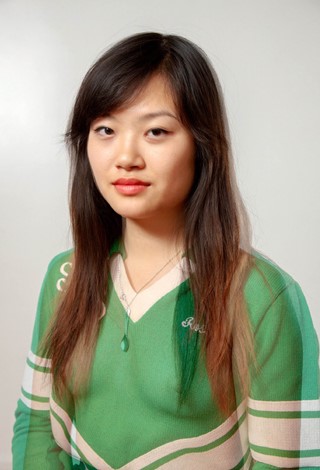
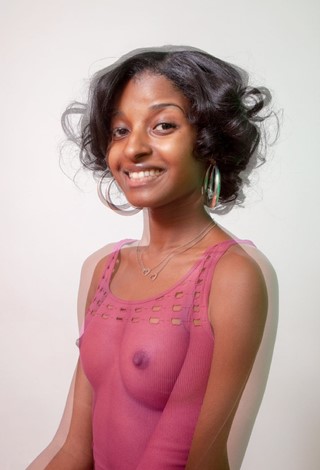
A: Do you find that your audience has changed over the years? How much do you consider it when planning your series?
RK: I don’t know if my audience has changed much over the years, but social rules have changed dramatically. During the Cinema of Transgression days, people assumed that I was into snuff films and all kinds of weird stuff (on some level I was) just like now people write to me, who think I have sex with all the models and live some wild crazy life. Right now, I just finished mopping up the cat hair in this apartment while I’m waiting for my clothes to finish in the dryer. Tonight I’m going to an AA meeting. Pretty wild, huh? Since 2018, I’ve dropped 99 per cent of the nude photography. Some of the recent photos I took for this book were the only times I’ve seen a topless woman at a shoot for ages.
A: Is there one piece of work that you would never sell?
RK: Something of my own work? No, everything is for sale. There won’t be room in my urn for any dumb artefacts. If you’ve ever had to clean out a dead parent’s home when they die it’s so obvious that we have too many material possessions.
A: Tell me about your Doubles series in Baron by Richard Kern. When did you start experimenting with superimposing portraits?
RK: This series originated when I shot a model wearing her school uniform and her retainer in 1997. Around 2010, I decided to do it again, this time shooting the models both with and without their tops so I could have both versions to choose from down the line (I used to do this all the time – shoot a SFW and a NSFW version at the same time). It was a quick easy setup and fitted in with the creepiness factor that I like to have in my work.
Then in 2011, the organiser of the ‘8-ball Zine Fair’ (that was a yearly event in New York pre-Covid) made a zine using these photos. When I visited the fair, he showed me one page where he accidentally printed both images on the same paper. A lightbulb went off in my head.
“Everything is for sale ... If you’ve ever had to clean out a dead parent’s home when they die it’s so obvious that we have too many material possessions”
A: Although your Doubles series for Baron seems less explicit than a lot of your earlier work, it’s still very erotic and playful. Have you adapted the way you shoot to work within social media guidelines?
RK: I was honestly surprised that Baron picked this series out of the ones I offered them as possible book ideas. I’ve got plenty of other books and video projects that I’m always working on – some are a bit controversial and others are not. The big publishers like Taschen aren’t doing the kinds of books I used to do, but I actually prefer these specific projects with small presses like Baron. Benedict Taschen himself once said to me, “you have to remember that this is not a masterpiece, it’s a masturbation piece”. They always chose the NSFW versions of the photos I took.
A: Generally, do you think men and women experience your work differently? I find a lot of humour and truth in your contemporary portraits, but I think men primarily see them as sexy.
RK: I would say it’s hard to generalise on that one. I know from Instagram that I have a lot of LGBTQ followers. I think that most people are looking for something striking or a particular style that appeals to them. I’m just guessing of course.
A: Do you still jerk off to your work?
RK: 30 years ago I would have had a flippant answer to that but now I’ll just say no. I cover this topic in my 1991 short film My Nightmare. I’m way past that now.
Baron by Richard Kern is available now through Baron Books.


